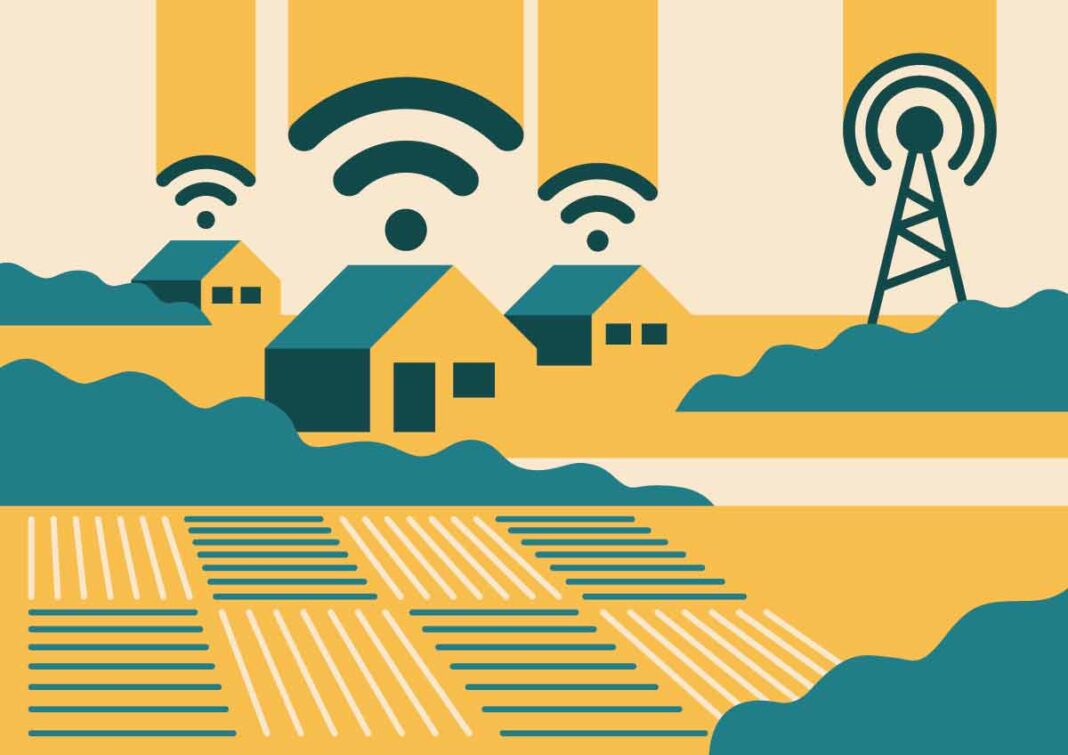NORTH BAY—There is a significant digital divide between rural and remote communities and large urban centres for high quality internet access. That was one of the findings in a recent report by federal Auditor General Karen Hogan. A study by Blue Sky Net backs up those findings.
The Auditor General found that rural and remote communities were currently at 59.5 percent high-speed internet access. Similarly, using the latest available data from the federal government, Blue Sky Net found that of the 285 Northern Ontario communities, only 74 had at least 50 percent of their households able to access 50/10 Mbps fixed high-speed internet. Of those 74 communities, only 47 had at least 75 percent of households accessing 50/10 Mbps internet.
Blue Sky’s study also found that smaller communities in Northern Ontario felt this impact the most. According to Census Canada, of the 285 Northern Ontario communities, 187 had populations under 1,000 and only 41 of these communities had at least 50 percent of their households able to access 50/10 Mbps internet.
Blue Sky Net has been partnering with the Canadian Internet Registration Authority (CIRA) to conduct speed tests throughout Northern Ontario to better understand the broadband landscape. Between 2020 and 2022, 31,895 speed tests were recorded; throughout that time, the media speed test result improved from a 4.99 Mbps (download speed) to 20.21 Mbps in 2022. Although these speed tests can also be taken by cell phone and satellite internet users, this shows a somewhat positive trend toward improved broadband access in Northern Ontario.
“What it looks like for Manitoulin Island? Nothing different from the last time we did a study of broadband in Northern Ontario,” said Susan Church of Blue Sky Net. “With the exception of Gore Bay’s new entrance from Leepfrog, the Island is still very underserviced.”
For broadband access in the Manitoulin District, “There are 17 communities with only one, Gore Bay, with at least 50 percent household coverage,” said Ms. Church, reading from the report.
The report outlines, “As shown in the by-district year-by-year glance at Northern Ontario speed tests, there has been a drastic improvement between the years 2020 and 2022/2023.”
Key considerations during this time period include the COVID-19 pandemic, (which) emphasized the need for improved broadband and may have forced users to upgrade their packages if available; government further investing and implementing in broadband projects; new entrants into the market, most notably Starlink satellite internet. For Manitoulin in 2020, the median download (speed) was 7.44 (Mbps) and the median upload was 0.97, based on 338 tests being submitted.
Both the federal government of Canada and Ontario’s provincial government understand the importance of high-quality internet access. In fact, both have set a target for 50/10 Mbps internet access speed. The federal government is aiming for every household by 2030 and the province of Ontario for every Ontario household by 2025. Although the federal government currently states that as of 2021, 91 percent of Canadian households had access to fixed high-speed internet, the recent report by Auditor General Hogan found that there was a significant digital divide between rural and remote communities and large urban centres.
The federal and provincial governments have made financial contributions pursuant to realizing these broadband access targets and to date, there are 73 projects throughout Northern Ontario in varying states of planning, construction and completion. These 73 projects represent projects from the Universal Broadband Fund and the Accelerated High-Speed Internet Program.
However, Ms. Church said, “We have never heard an update on the announced projects in July 2021. We’ve never heard an update.”
“We know areas like Manitoulin Island are underserved,” said Ms. Church. “As ongoing studies try to move the yardstick along for Manitoulin Island, we need to hear from the elected officials as to what is happening. The federal and Ontario government announced this big project in 2021, and (there has been) no update since. There has been absolutely nothing done since the report. No news isn’t necessarily good.”
Blue Sky Net recognizes that high-speed broadband is not a “one solution fixes all” landscape and that “a diverse array of techniques will be required in order to ensure the 50/10 Mbps broadband access target” for every household achieved, she added.
The geography and topography of Northern Ontario are both unique and beautiful, but present challenges to network developers as well: the hard bedrock is costly to blast through for fibre and cable, and our forests and hills may block line-of-site technologies such as fixed-wireless broadband.
The majority of regions throughout Northern Ontario still do not benefit from 50/10 Mbps access, and this issue is further exacerbated when viewing communities further away from urban centres. One of the major contributing factors in this digital divide between rural and urban centres is the cost of developing terrestrial networks in areas where the return on investment for internet service providers (ISPs) is diminished due to the longer distances between households and communities, lower population density and the cost of overcoming geographic challenges.
Both the federal and provincial governments have made terrestrial high-speed broadband access a priority and significant investments into infrastructure throughout Northern Ontario have already been made. It is encouraging to see both signs of improvement from users taking the connected north.ca CIRA speed test and seeing investments made by governments to help subsidize the cost of developing broadband networks in areas where ISPs require financial support to access communities and households. The 73 identified announced in-progress and recently completed projects indicating that improvements to broadband access are imminent and we look forward to tracking these results upon the release of updated ISED national broadband data.
Blue Sky Net says it is continuously committed to mapping Northern Ontario broadband access to the property level and monitoring broadband projects in order to ensure that governments and ISPs are not only reaching as many households as possible but also do so with cost efficiency.





